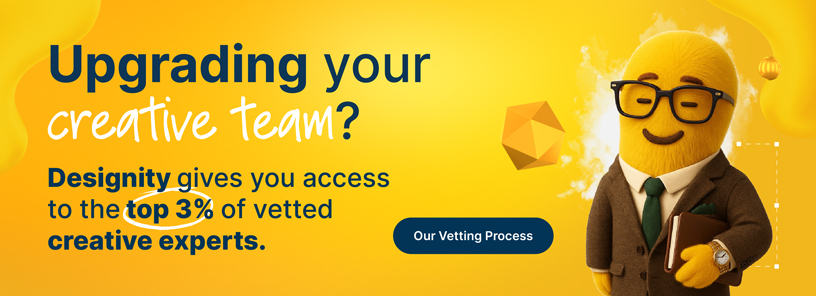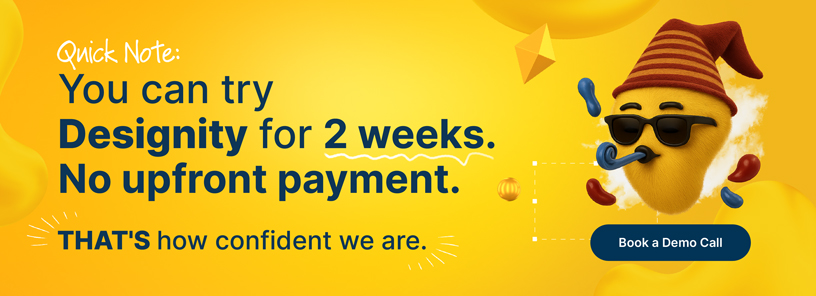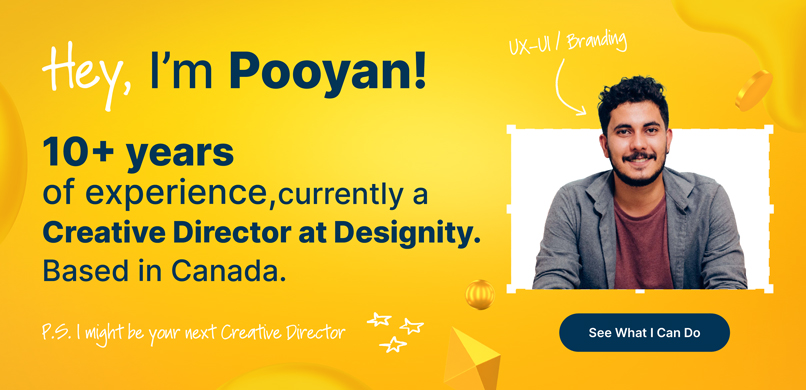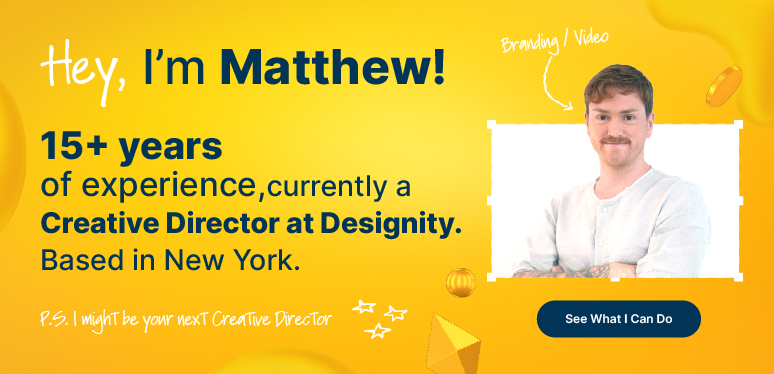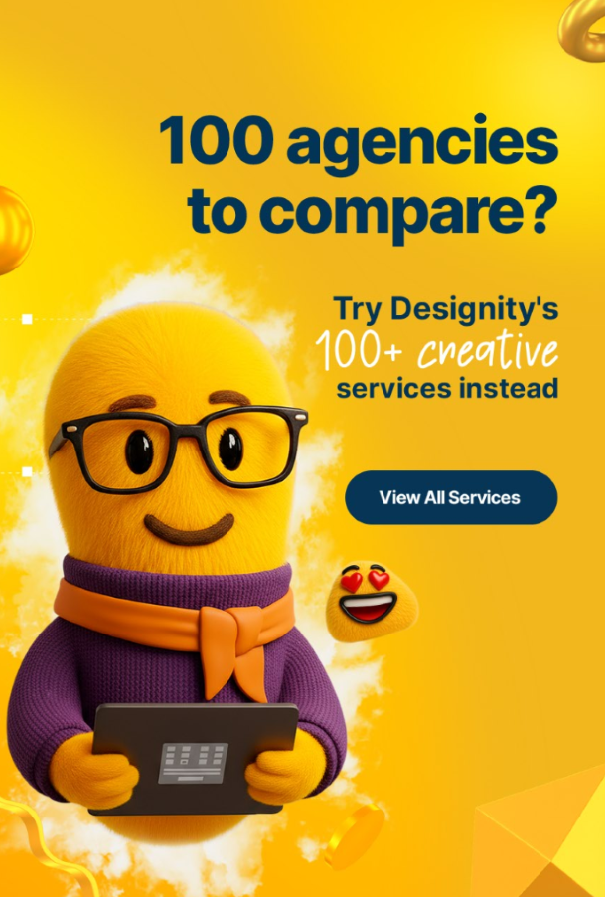As we inch closer and closer to 2024, Fintech, the fusion of finance and technology, continues to lead the way in the finance world!
So, what’s on the horizon for fintech companies in the new year, and how will your marketing efforts continue to resonate with your existing customers and help you reach new ones?
If you’re looking to stay on top of the trends to keep your marketing efforts fresh and drive business growth, then today’s blog is for you!
We’re journeying to the future to explore the technology and customer trends that we believe will shape the fintech marketing landscape in the coming year!
Let’s see what 2024 is set to bring.
Why Is It Important to Keep an Eye on Fintech Trends?
Keeping up to date with the trends is not only a good idea, it's essential if you want your fintech company to grow and thrive!
Here are some additional benefits looking ahead can have for your fintech marketing campaigns and strategies:
- Innovation Dynamics — The fintech landscape is dynamic, with innovations constantly reshaping how user’s financial services are delivered. Staying updated keeps you in the know about the latest technologies and strategies to stay competitive.
- Customer Expectations — Fintech trends often change with evolving customer expectations. Understanding these trends helps you meet customer needs more effectively, enhancing both their experience and satisfaction.
- Competitive Edge— Being aware of emerging trends lets you stay ahead of your competition. Implementing new, effective marketing strategies can give your brand a competitive edge in a crowded market.
- Regulatory Impact — The financial industry is always subject to regulatory changes. Keeping track of fintech trends helps you adapt to these shifts, keeping your company in compliance and minimizing risks.
- Technology Integration — Fintech trends frequently involve the integration of advanced technologies. Knowing these trends enables you to adopt and implement technologies that can streamline operations and improve your efficiency.
- Strategic Planning — Staying up to date with fintech marketing trends helps you out with strategic planning. It allows you to align your business strategies with the broader direction of the industry for long-term success.
- Customer Engagement — Fintech marketing trends often introduce different ways to engage with customers. By embracing these trends, you can enhance your marketing efforts and build stronger connections with your audience.
- Adaptability — The financial landscape is subject to rapid changes. Being informed about trends helps keep you on your toes so you can pivot and adjust strategies as needed to address evolving market conditions.
12 Fintech Marketing Trends to Keep Your Eye On

Here is a list of the trends we expect to gain some serious traction in the coming year.
1. Gamification
Gamification has been growing in popularity and is expected to continue in 2024, for fintech and other industries as well.
Gamification involves incorporating game-like elements in your fintech apps, like rewards, challenges, virtual badges, and other interactive features to give your users a sense of achievement and something to work towards.
This is a particularly effective strategy because it enhances your user engagement, makes financial activities more enjoyable and fun, and encourages your users to explore and use your app more frequently.
Examples of Gamification Strategies
- Loyalty Programs— Many businesses use point systems, badges, and rewards to encourage repeat purchases. Customers earn points for each transaction, and these points can be redeemed for discounts, exclusive offers, or free products.
- Mobile Apps and Check-ins— Apps often use gamification to encourage users to check in, complete tasks, or achieve specific milestones. For example, users may earn badges or unlock special features for completing certain in-app actions.
- Contests and Competitions— Running contests where participants can compete for prizes or recognition is a classic gamification strategy. This could involve creating user-generated content, solving puzzles, or participating in challenges.
- Progress Bars and Levels— Showing progress bars or indicating different levels of achievement can motivate users. This is commonly seen in fitness apps, educational platforms, and skill development programs.
- Interactive Quizzes and Surveys— Gamified quizzes and surveys make the process more enjoyable. Users may earn points, receive immediate feedback, or be entered into a prize draw upon completion.
- Virtual Badges and Achievements— Awarding virtual badges or achievements for completing specific actions or reaching milestones is a popular gamification technique. These badges can be displayed on user profiles or shared on social media.
- Spin-to-Win Wheels— Brands often use spin-to-win wheels on websites or mobile apps. Users get a chance to spin a virtual wheel for a prize, discount, or special offer, creating an element of excitement.
- Augmented Reality (AR) Games— AR games, like scavenger hunts or location-based challenges, engage users in real-world environments. These games often leverage mobile devices to provide an interactive and immersive experience.
- Storytelling and Narratives— Brands create interactive stories or narratives where users make choices that impact the storyline. This can be an effective way to keep users engaged and curious about the next part of the narrative.
- Leaderboards and Social Sharing— Implementing leaderboards to showcase top performers or encouraging users to share their achievements on social media taps into the competitive and social aspects of gamification.
2. Content Marketing
We’ve said it before … content is king.
And there’s no reason to suspect that 2024 is going to be any different than years past. So, if you haven’t jumped on board with creating valuable, consistent, and relevant content to attract and engage your audience, then it’s time you did.
Content marketing is especially impactful in fintech because it positions your brand as an authority, builds trust with your audience, and provides much-needed education about complex financial topics.
And in the world of fintech, where education and information are key, your content serves as a very powerful tool to retain your existing customers and attract new ones.
Examples of Content Marketing Strategies
- Educational Blog Posts— Providing in-depth guides, how-to articles, and industry insights through blog posts establishes your brand as a knowledgeable resource in the fintech space.
- Video Explainers— Creating engaging videos that simplify complex financial concepts, explain product features, or offer tutorials enhances user understanding and accessibility.
- Infographics and Visual Aids— Using visually appealing infographics and charts to convey data and statistics can make information more digestible for your audience.
- Podcasts— Hosting podcasts that discuss industry trends, interview experts, and share valuable insights allows your audience to consume content on the go.
- eBooks and Whitepapers— Offering comprehensive eBooks or whitepapers on specific financial topics demonstrates thought leadership and provides in-depth information to your audience.
- Interactive Tools— Developing interactive tools like financial calculators or budgeting apps adds value to your users while keeping them engaged with your brand.
- Webinars and Live Events— Hosting webinars or live events on relevant financial topics allows for real-time interaction with your audience and positions your brand as an authoritative voice.
- User-Generated Content Campaigns— Encouraging users to share their experiences, success stories, or creative content related to your Fintech services can create a sense of community and authenticity.
- Social Media Engagement— Leveraging social media platforms to share bite-sized financial tips, updates, and engaging content fosters a direct connection with your audience.
- Personalized Newsletters— Sending tailored newsletters with curated content based on user preferences keeps your audience informed and engaged while promoting your services.
3. Influencer Marketing
Influencer marketing is the collaboration of your brand with individuals who have a significant following and influence within your target audience.
And as social media celebrities continue to exert their influence over their followers, we predict more and more fintech companies will get in on the action and partner with influencers in the finance and tech sectors to amplify their reach and credibility.
It works for other brands, after all. Partnering with influences humanizes your brand, leverages the trust that influencers have built with their audience, and provides authentic endorsements for your fintech products or services.
Examples of Influencer Marketing Strategies
- Expert Collaborations— Partnering with finance experts, industry analysts, or thought leaders to endorse or review your fintech products lends credibility and expertise to your brand.
- Social Media Takeovers— Allowing influencers to take over your social media accounts for a day or a specific campaign can bring a fresh perspective and engage your audience.
- Product Endorsements— Having influencers use and endorse your fintech products through posts, videos, or reviews can significantly impact their followers' perceptions.
- Educational Collaborations— Collaborating with influencers to create educational content, webinars, or live sessions about financial literacy or fintech trends adds value to your audience.
- Event Sponsorships— Sponsoring events where influencers participate or speak provides exposure to a wider audience while associating your brand with industry experts.
- Affiliate Partnerships— Offering influencers affiliate partnerships, where they earn a commission for each user they refer, creates a mutually beneficial relationship.
- Exclusive Offers for Followers— Providing influencers with exclusive offers or discounts to share with their followers incentivizes engagement and encourages user adoption.
- Podcast Collaborations— Guest appearances or sponsored segments on influencer-hosted podcasts can effectively reach audiences interested in finance and technology.
- Challenges and Contests— Creating challenges or contests in collaboration with influencers encourages audience participation and builds excitement around your fintech brand.
- Thought Leadership Campaigns— Involving influencers in thought leadership campaigns, where they share insights or opinions on industry trends, positions your brand at the forefront of discussions.
4. Affiliate Marketing

Like influencer marketing, affiliate marketing also involves partnering with other individuals or entities (affiliates) who promote your Fintech products or services.
With affiliate marketing, however, the goal is for your affiliates to promote for you in exchange for a commission for each customer they drive to your platform (and vice-versa, it’s a two-way street).
Affiliate marketing is already at work in the world of fintech and we expect this to continue in 2024!
Below are some ways to help you get started:
Examples of Affiliate Marketing Strategies
- Commission-Based Partnerships— Establishing partnerships with affiliates who earn a commission for every customer they refer provides a performance-driven approach to marketing.
- Exclusive Promotions for Affiliates— Offering affiliates exclusive promotions, discounts, or early access to new features encourages them to actively promote your fintech offerings.
- Customized Affiliate Dashboards— Providing affiliates with personalized dashboards that offer real-time insights into their performance, commissions, and audience engagement enhances transparency and collaboration.
- Tiered Commission Structures— Implementing tiered commission structures, where affiliates earn higher commissions based on the number of customers they refer, motivates them to drive more conversions.
- Educational Resources for Affiliates— Equipping affiliates with educational resources, such as guides, webinars, or product demos, helps them understand your offerings better and effectively communicate their benefits to their audience.
- Performance Tracking and Analytics— Utilizing robust tracking and analytics tools enables affiliates to monitor their performance and optimize their strategies for better results.
- Affiliate Contests and Incentives— Running contests or providing additional incentives for top-performing affiliates fosters healthy competition and boosts overall affiliate engagement.
- Transparent Communication— Establishing clear communication channels and guidelines ensures that affiliates understand your brand message and marketing objectives, aligning their efforts with your fintech brand values.
- Affiliate Networking Events— Hosting events or webinars that bring affiliates together to share experiences, strategies, and insights creates a sense of community and strengthens your relationship with them.
- Strategic Selection of Affiliates— Identifying and partnering with affiliates whose audience aligns with your target market ensures that your products are promoted to individuals genuinely interested in your fintech solutions.
5. Strong Branding
Establishing a strong brand identity is crucial for any company, but especially for fintech!
To create a strong brand in the fintech landscape, you’ll need to create a distinctive and memorable brand image that sets your marketing efforts apart and resonates with your target audience. This goes beyond logos and color schemes; it should encompass the values, personality, and the unique selling propositions that make your fintech company the one to choose in 2024!
Here are some more benefits of rocking a recognizable and familiar brand:
- Trust and Credibility — A strong brand builds trust, instills confidence, and establishes credibility in the competitive fintech landscape.
- Customer Loyalty — Consistent branding fosters customer loyalty by creating a recognizable and reliable presence in the minds of your audience.
- Market Differentiation — In a crowded market, strong branding helps your fintech company stand out, making it easier for customers to choose your services over competitors.
- Emotional Connection — Effective branding connects with customers on an emotional level, forging a deeper and more meaningful relationship with your audience.
- Brand Advocacy — A strong brand inspires customer advocacy. Satisfied customers are more likely to become brand ambassadors, promoting your fintech solutions to their networks.
If you’re in need of some help creating that strong brand, we can help you out with that!
6. Personalization
When it comes to the often impersonal and intimidating world of finance, brands who personalize their content can expect to better connect with their customers, build longer-lasting relationships, and succeed in 2024.
Personalization in fintech involves customizing user experiences, communications, and offerings based on individual preferences, behaviors, and demographics.
In an era where customers expect a smooth, seamless, and personalized experience tailor-made for them, why not use your tech to deliver the experience they deserve with elements like:
- Tailored User Interfaces — Customizing the user interface based on individual preferences and usage patterns enhances the overall user experience.
- Personalized Recommendations — Utilizing algorithms to suggest relevant financial products, services, or content based on user behavior and history.
- Dynamic Content Customization — Adapting website content, emails, and communications in real-time to reflect user preferences and behaviors.
- Behavior-Based Automation — Implementing automated processes triggered by user actions, such as personalized onboarding journeys or targeted follow-up communications.
- Personalized Financial Advice — Offering tailored financial advice and recommendations based on user financial goals and history.
- Individualized Marketing Campaigns — Creating targeted marketing campaigns that speak directly to specific segments of the audience, addressing their unique needs and concerns.
- Customized Product Offerings — Developing personalized product bundles, features, or pricing structures based on user preferences and usage patterns.
- Geographic Personalization — Adapting offerings and communications based on the user's geographic location and regional financial trends.
- Preference-Based Communication Channels — Allowing users to choose their preferred communication channels and tailoring interactions accordingly.
- Personalized Customer Support — Providing personalized and proactive customer support based on user interactions, issues, and preferences.
More Benefits of Personalized Marketing Tactics
- Enhanced User Experience — Tailoring interactions to individual preferences creates a more enjoyable and relevant experience for users, increasing satisfaction and loyalty.
- Increased Engagement — Personalized content, recommendations, and offers capture user attention more effectively, driving higher engagement rates and interactions.
- Improved Conversion Rates — Targeted and personalized messaging resonates better with users, translating into improved conversion rates and higher success in marketing campaigns.
- Customer Retention — Providing personalized services fosters a sense of loyalty as customers feel understood and valued, reducing churn rates.
- Data-Driven Insights — Personalization relies on data analysis, providing valuable insights into user behaviors, preferences, and trends that can inform future marketing strategies.
7. AI and Machine Learning
Like many other industries, AI and Machine Learning have been seamlessly integrating into fintech’s everyday marketing efforts in order to create a better customer experience for potential customers.
In 2024, we expect this to continue and evolve even further as advancements are made in AI technology. This isn’t much a trend, we feel, but a strategy that’s here to stay.
Here are other ways that implementing AI can benefit your marketing strategies in 2024.
Benefits of AI and Machine Learning
- Enhanced Customer Insights — AI algorithms analyze vast datasets, providing unparalleled insights into customer behaviors, preferences, and trends. This data-driven approach enables fintech companies to tailor their offerings with precision.
- Fraud Detection and Prevention — Machine Learning algorithms excel in detecting patterns indicative of fraudulent activities. Fintech firms deploy these tools to bolster security measures, safeguarding transactions and protecting customer assets.
- Personalized Financial Recommendations — AI-driven recommendation engines analyze individual financial patterns, offering personalized suggestions for investments, savings, and financial planning. This tailored approach enhances user experience and engagement.
- Automation of Routine Tasks — Machine Learning automates repetitive tasks, streamlining processes such as customer support, document verification, and data entry. This not only enhances efficiency but also allows human resources to focus on more complex issues.
- Credit Scoring and Risk Assessment — AI algorithms assess creditworthiness by analyzing diverse data points, providing a more comprehensive and accurate evaluation of an individual's or business's financial health. This fosters fairer lending practices.
- Algorithmic Trading — AI and Machine Learning algorithms power algorithmic trading strategies, optimizing investment decisions by analyzing market trends and making rapid, data-driven trades.
- Chatbots for Customer Interaction — AI-driven chatbots offer real-time customer support, answering queries, resolving issues, and providing information. This enhances customer satisfaction by ensuring prompt and efficient communication.
- Cybersecurity Measures — AI is employed to strengthen cybersecurity protocols, detecting and mitigating potential threats in real time. This proactive approach safeguards sensitive financial information and maintains the integrity of fintech platforms.
- Smart Compliance Solutions — AI assists in ensuring compliance with ever-evolving financial regulations. Fintech companies leverage these solutions to navigate complex regulatory landscapes, reducing the risk of non-compliance.
- Predictive Analytics for Market Trends — AI algorithms analyze market trends, enabling fintech firms to make informed predictions and strategic decisions. This foresight is invaluable for staying ahead in a dynamic and competitive financial environment.
8. Educational Campaigns

In fintech, knowledge is power, baby.
And in order to build trust, empower your potential users to make informed decisions, and navigate financial decisions, educational campaigns are what you need.
Providing valuable insight, simplifying complex concepts, and fostering financial literacy are all marketing strategies that have been working well and we can expect more of the same in 2024.
Remember, you’re not just marketing your fintech product, you’re giving your users the knowledge they need to take charge of their finances!
Ideas for Educating Your Users
- In-depth Educational Webinars — Host webinars that delve into complex financial topics, featuring industry experts to educate and engage your audience.
- Interactive Learning Modules — Develop interactive modules on your platform, allowing users to explore financial concepts at their own pace with quizzes and activities.
- Fintech Masterclasses — Offer masterclasses that provide deep dives into the functionalities of your fintech products, enhancing users' understanding and usage.
- Financial Literacy Challenges — Create challenges that encourage users to enhance their financial literacy, offering rewards for completing educational milestones.
- Collaborations with Financial Experts — Partner with financial experts to create content that simplifies complex topics, making them accessible to a broader audience.
- Personal Finance Workshops — Conduct workshops, whether in person or virtual, where users can gain practical insights into managing their personal finances effectively.
- Real-life Case Studies — Share real-life case studies showcasing how your fintech solutions have positively impacted users, providing tangible examples of success.
- Interactive Infographics and Guides — Craft visually appealing infographics and guides that break down intricate financial concepts, making them digestible for your audience.
- Financial Wellness Challenges — Introduce challenges focused on improving users' financial well-being, combining educational content with actionable steps.
- Collaborative Learning Communities — Foster communities where users can engage in discussions, share knowledge, and learn from each other, creating a collaborative learning environment.
9. Experiential Marketing
In the dynamic realm of fintech, where personalized engagement makes all the difference, embracing experiential marketing can set your brand apart and help you foster genuine connections with your audience to drive success in 2024.
Experiential marketing in fintech is all about creating immersive and memorable brand experiences that go beyond transactions. It's a strategic approach to help you build meaningful relationships and engage your users.
Ways to Elevate Your User Engagement
- Interactive Financial Simulations — Develop simulations allowing users to experience financial scenarios, educating and empowering them with hands-on learning.
- Virtual Reality (VR) Banking Experiences — Dive into the future by offering VR experiences that transport users to virtual bank branches, enhancing the digital banking experience.
- Live Webinars and Workshops — Host live events providing valuable insights, expert discussions, and real-time interactions to educate and engage your audience.
- Fintech Meetups and Networking Events — Facilitate in-person or virtual events where users can connect, share experiences, and engage with your brand and industry experts.
- Personal Finance Challenges and Games — Create challenges and games that encourage users to enhance their financial literacy and compete in a friendly, educational environment.
- Augmented Reality (AR) Product Demonstrations — Implement AR to showcase your fintech products, allowing users to visualize and interact with them in their real-world environments.
- Exclusive Beta Testing Opportunities — Offer select users the chance to be part of beta testing new features, providing them with an exclusive and hands-on role in shaping your offerings.
- Financial Wellness Retreats — Organize retreats or virtual events focused on financial well-being, featuring expert-led sessions, mindfulness practices, and networking opportunities.
- Gamified Financial Challenges — Introduce gamified challenges where users can navigate financial scenarios, making learning enjoyable while reinforcing your brand's educational value.
- Personal Finance Web Series — Develop an engaging web series that explores diverse financial topics, combining entertainment and education to captivate your audience.
10. Bank and Fintech Collaboration
In the ever-evolving landscape of fintech, collaboration is the name of the game.
Traditional banks and fintech companies are joining forces for an ideal blend of stability and innovation and, moving into 2024, we expect to see this trend not just continue but to flourish.
This collaboration creates marketing opportunities that resonate with users, such as:
Benefits of Bank and Fintech Collaboration
- Expanded Service Offering — Banks can leverage fintech expertise to enhance their digital services, introducing innovative solutions like mobile banking apps, robo-advisors, and personalized financial management tools.
- Improved Customer Experience — Fintech brings a user-centric approach, and when combined with the established customer base of banks, it creates an environment where users enjoy a seamless and customer-friendly experience.
- Innovation in Payments — Collaborations often lead to advancements in payment systems, enabling faster, more secure transactions, and embracing emerging technologies like blockchain.
- Financial Inclusion — By working together, banks and fintech companies can extend financial services to underserved populations, promoting financial inclusion and accessibility.
- Regulatory Compliance — Traditional banks bring regulatory expertise, helping fintech partners navigate the complex landscape and ensuring compliance with financial regulations.
11. Sustainability and Social Responsibility
Like they are in many other industries, fintech customers are more and more embracing sustainability and social responsibility and expecting the same from the brands that they use.
Moving into 2024, we anticipate a continued emphasis on integrating sustainability practices and social responsibility into fintech marketing strategies. This goes beyond mere compliance; it's about actively contributing to a more sustainable and socially conscious future.
Here are ways you can infuse sustainability and social responsibility into your fintech marketing and contribute to a better and more responsible future:
Strategies for Sustainability and Social Responsibility
- Green Initiatives — Showcase your commitment to the environment by adopting eco-friendly practices in your operations and communicating these efforts to your audience.
- Financial Inclusion Programs — Implement initiatives that promote financial inclusivity, providing access to financial services for underprivileged or underserved communities.
- Ethical Investment Options — Offer investment products that align with ethical and sustainable principles, catering to users who prioritize responsible financial choices.
- Transparent Communication — Practice transparent communication about your company's sustainability goals, initiatives, and progress, fostering trust among your audience.
- Charitable Partnerships — Collaborate with charitable organizations or community projects, allowing users to contribute or participate in initiatives that make a positive impact.
- Educational Campaigns on Sustainability — Create educational content that raises awareness about sustainability and encourages responsible financial behaviors among your audience.
- Carbon Footprint Reduction — Implement measures to reduce your company's carbon footprint and demonstrate your commitment to environmentally friendly practices.
- Community Engagement — Actively engage with your local and global communities, supporting causes that matter to your audience and reflecting shared values.
- Social Impact Reports — Share periodic reports outlining the social impact of your fintech initiatives, demonstrating accountability and transparency.
- Employee Volunteer Programs — Encourage and facilitate volunteer opportunities for your employees, fostering a culture of social responsibility within your organization.
12. Augmented Reality (AR) Experiences
Augmented Reality (AR) is emerging as a captivating trend that adds an interactive layer to user experiences and, as it turns out, fintech is no exception!
As we inch towards 2024, we predict that more and more fintech brands will be integrating AR experiences into their marketing efforts to elevate user engagement and differentiate themselves in a crowded market.
This trend also will vibe with the evolving expectations of users who are looking not only for functional financial services but also one that gives them memorable and interactive experiences.
Here are some ways to inject some AR into your marketing efforts:
Ways to Implement AR Experiences into Your Marketing
- Portfolio Visualization — Allow users to view their investment portfolios in augmented reality, providing a visual representation of their assets and their performance over time.
- Interactive Financial Simulations — Create AR simulations that help users understand financial concepts by allowing them to interact with virtual financial scenarios and see the potential outcomes.
- Branch Locator with AR Navigation — Integrate AR navigation into your mobile app to help users locate the nearest physical branches or ATMs by overlaying directions on their smartphone screens.
- Virtual Financial Advisors — Develop AR-powered virtual financial advisors that guide users through financial planning, investment strategies, and personalized recommendations in a visually engaging way.
- AR-enhanced Banking Statements — Enable users to visualize and interact with their transaction history in AR, providing an immersive experience to review past transactions, categorize expenses, and set financial goals.
- Product Demonstrations — Use AR to provide interactive demonstrations of financial products, showcasing features, benefits, and how they fit into users' financial lives.
- Real Estate Investment Tours — For fintech platforms involved in real estate investment, offer AR tours of properties, allowing potential investors to explore spaces virtually and assess investment opportunities.
- Insurance Coverage Visualization — Help users understand their insurance coverage better by using AR to visualize different scenarios and coverage options, making complex policies more comprehensible.
- Interactive Financial Education — Develop AR content for educational purposes, such as interactive AR lessons on budgeting, investing, and financial planning, making learning about finances more engaging.
- AR-powered Events and Promotions — Enhance marketing events or promotions with AR elements, providing users with interactive experiences related to special offers, discounts, or product launches.
- Virtual Branch Tours —For online banks or fintech platforms without physical branches, offer virtual tours of your "virtual" branches using AR, creating a unique and futuristic brand experience.
- Augmented Reality Banking Cards — Create AR experiences linked to physical banking cards, allowing users to access additional information, promotions, or security features by scanning their cards with a mobile device.
<div class="c-blog_comp-cta cc-component-1"><div class="c-blog_comp-cta-left"><div class="c-blog_comp-cta-left-wrap"><img src="https://global-uploads.webflow.com/61cdf3c5e0b8155f19e0105b/6369722e59155470b6840033_Potential-clients.png" loading="lazy" alt="" class="c-blog_comp-cta-left-img"></div></div><div class="c-blog_comp-cta-right"><div class="c-blog_comp-content"><div class="c-text-wrapper cc-mb-32"><div class="c-title-4 cc-bold"><strong>Want to save money without sacrificing the quality?</strong></div></div><div class="c-text-wrapper"><div class="c-text-2">Say goodbye to traditional, expensive agencies and unreliable marketplaces. Say hello to Designity.<br></div></div></div><div class="c-blog_comp-wrapper"><a href="/pricing" target="_blank" class="c-button cc-primary cc-inverted w-button"><strong>Get Your 2-Week Trial</strong></a></div></div></div>
Need a Partner to Help You Navigate 2024 and Beyond?
If you’re looking to make 2024 the year your Fintech company finally steps up its marketing game to see the results that you want, then we’re all for it!
And if you need a partner to help you do all of that, then we’re all for that too!
Partnering with Designity gives you access to the top 3% of US-based creatives, with every skill set you need to watch your fintech marketing strategies come to life. From mobile app developers to web designers, copywriters, and more, our Designity Creatives are ready to give you the marketing assets your campaign needs.
And with a dedicated Creative Director acting as your project manager and single point of contact, all you’ll need to do is tell us your goals, give us direction, and then sit back and approve your marketing deliverables as they come in.
Why not have a look at our portfolio and see what Designity has been able to do for fintech companies just like yours?
If your style vibes with yours, why not book your demo call? It only takes a few minutes and when you’re done, you can test drive our services with a two-week, no-obligation trial.
Is your marketing team ready for 2024?




